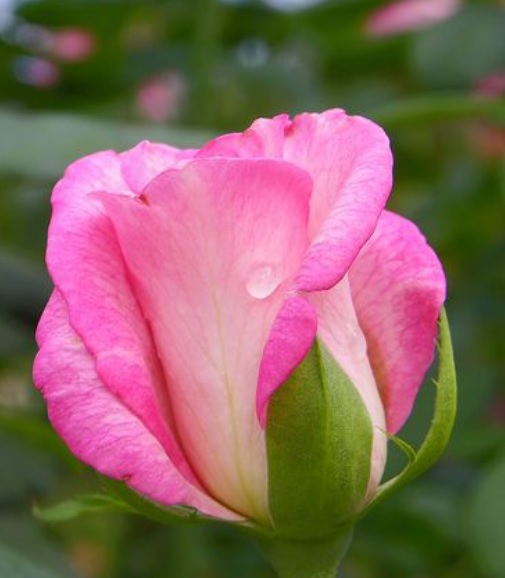FWP:
SETS == IZAFAT; MULTIVALENT WORDS ( havā ); SYMMETRY
CHAK-E GAREBAN: {17,9}
For background see S. R. Faruqi's choices. This verse is NOT one of his choices; I thought it was interesting and have added it myself. For more on Ghalib's unpublished verses, see the discussion in {4,8x}.
For discussion of yak-ʿālam and related constructions, see {11,1}. The positioning of this enigmatic little phrase is also cleverly ambiguous: it can be read as adjectival for the ripping of the rose's collar ('entire'), or adverbial ('entirely').
Above all, the word havā is crucial here. It of course names the 'breeze' of dawn that blows on the rose and, deliberately or in passing, opens it out into bloom, and then all too soon bears away its withered petals, so that the breeze itself causes the rose's collar to be torn. The ambiguity of the iẓāfat makes it equally possible that the tearing of the collar 'of' the rose is in fact done 'by' the rose itself. On the general significance of the tearing of the collar, see {17,9}.
But havā also means 'affection, favor, love', and even 'lust' as well. (For more on havā , see {8,3}.) On this reading, what the dawn wants is for the rose's collar to be torn. Perhaps it wants the rose to tear open its own collar, as a mad lover should; though of course in the ghazal world the rose is usually the beloved, not the lover. Perhaps it wants the rose to display its beauty more visibly to the world. Or perhaps it wants to rip open the rose's collar itself, in a 'lustful' way. No matter how we read the nature of the havā , the result is clear: the attentions of the dawn aim at the 'tearing of the collar' of the rose. And in a splendid show of wordplay, to stroll or 'take the air' is in Urdu to 'eat the air', havā khānā -- an idiom that, in view of the second line, cannot fail to hover over the verse.
The second line seems to envision a sympathizer, a 'grief-eater' (see the definition of ġham-ḳhvār above). For a literal use of this term, see {2,1}. This person is urged by the speaker to take some appropriate action, if he or she 'eats my grief'. But what exactly is it to 'eat my grief'? On the ambiguity of merā ġham as either 'my grief' or 'your grief over me', see {41,6}. In the present verse the grammar leaves it completely open as to whether the sympathizer might feel or share the lover's own grief, or might feel a different grief born of sympathetic concern for the lover.
And ultimately it doesn't matter: we know what the outcome should or must be. If you 'eat my grief', says the lover to the addressee (some friend or well-wisher?), then go ahead-- create the 'mouth' of a wound! How else could grief be 'eaten'? Similarly, the only way for the lover to talk to the beloved may be through the 'mouth' of a wound, as in {214,1}. There's also the grotesque view of a similar(?) kind of 'eating' in {6,4}.)
A weakness of the verse is that the first line is so exceptionally multivalent that it's difficult to make a really satisfying connection with the second line.

Asi:
The dawn breeze is, so to speak, with regard to the rose, a 'whole-world' of equipment for collar-ripping. Thus through this 'breeze-eating' no work of mine either was able to get done. If you want to feel/'eat' {my grief /grief over me}, then create the mouth of a wound.
A second meaning is that at dawn, the state of 'breeze-eating' is manifest through the rose-- that the rose tears its collar. If you wish to do my 'grief-eating', then first create the mouth of a wound. Mirza has at one place composed the creation of the mouth of a wound like this: {214,1}.
== Asi, p. 60